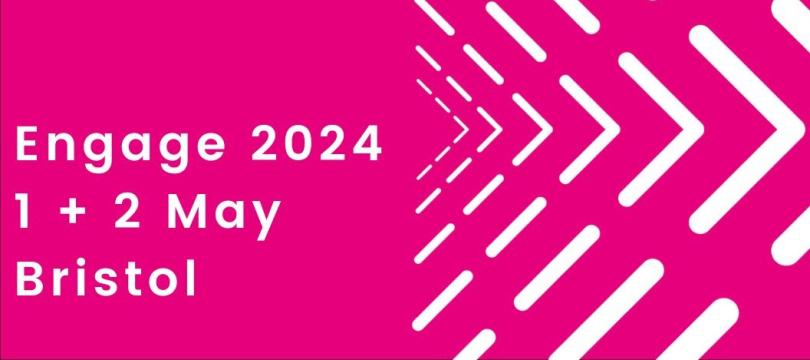Results in for Public Engagement with STEM survey
David Owen, NCCPE Associate, presents the results of the Public Engagement with STEM survey which was coordinated by members of the National Forum for Public Engagement for STEM.

20 / 03 / 2019
David Owen, NCCPE Associate, presents the results of the Public Engagement with STEM survey which was coordinated by members of the National Forum for Public Engagement with STEM.
The Public Engagement with STEM survey was aimed at professionals and volunteers who are working in informal STEM engagement and it covered a wide range of ground including diversity and inclusion, audience engagement and approaches to and uses of evaluation and audience data. The survey was commissioned to help gather useful intelligence from organisations working in informal STEM engagement and to better understand the relevance of the work of the National Forum and how it could be improved.
The NCCPE worked closely with the British Science Association and other Forum members to develop, test and analyse the data. In its development, we took inspiration from the Arts Professional Pulse Report and other similar surveys, which have been used to stimulate discussion and provide insights in different sectors. We recognised very early that we would not at this stage be able to develop something that could be deemed representative of those working in informal STEM engagement, as we still don’t have a clear picture of the diverse range of organisations and individuals working in this space. However, we thought this would be an important start and we were keen from the outset to share the findings with the sector.
You can find the final report from the survey online here. If you took the time to complete the survey, we would like to thank you once again for your time on behalf of the Forum. Forum members discussed the results at the most recent National Forum meeting, and members will be returning to this report and using it to inform our work in the coming months.
So what does the survey reveal? There are a host of insights and much food for thought in the report. Here are just a handful of the issues which we explored at the last Forum meeting.
What are the key aims that motivated our respondents to engage with the public?
Five aims dominated the responses:
- To help people feel confident in engaging with STEM
- To help people enjoy STEM
- To create conversations between STEM professionals and the public
- To develop a scientifically literate society
- To create a more fair and equitable society
What are their top three challenges?
Three key issues dominated responses:
- Lack of time and resources
- Lack of influence and/or strategic support
- Lack of or poorly targeted funding
Approaches to diversity and inclusion
There were a number of findings, but three stand out:
- There has been very little change in diversity of those working in informal STEM engagement since the BSA ran a similar survey in 2015/16
- The responses highlighted a lack of diversity in several key areas, including ethnicity, level of education, and disability.
- Those completing the survey consider that they have the staff with the right skills/attributes and the right organisational culture to improve diversity and inclusion in STEM, and tend to point towards funding as a barrier. However, the lack of diversity in the respondents to the survey must be taken into account here.
Audience data and evaluation
- People really want longitudinal data/evaluation, but short term planning cycles and grants are barriers to this.
- There is also a strong interest in evaluating across clusters of projects rather than evaluating individual projects.
- People want to make better use of the audience/evaluation data that is available. For example, linking data sets, sharing data about audiences and impacts across programmes.
Science Capital
Just over half of those completing the survey have used Science Capital to inform their work.
People cited a number of ways in which they had used the concept including influencing how they talk to young people or who they choose as role models.
The majority, cite that it had influenced approaches to reaching underserved audiences, shortly followed by just over half of people suggesting that it had helped them reflect on their own journey.
Concerns were raised around the implementation of the concept, in particular around it becoming the new deficit model. People stressed the importance of ensuring that it changes our approach to STEM engagement and that these changes are measured/evaluated effectively.
Funding system: Improving models and approaches to funding
A number of priorities for funding were put forward in the results, which clustered into four areas:
- Opening up funding (i.e. encouraging greater diversity of applicants, addressing gaps in funding)
- Better linkage to other sectors (i.e. arts, and business)
- Improving the funding system (i.e. more coherent cross-cutting objectives, invest in capturing and sharing learning)
- Re-addressing what is funded (i.e. cover overheads and costs, encourage legacy)
The Forum will be holding a Funding Round Table in 2019 with other key funders working outside STEM. The event will explore challenges faced by funders operating in different sectors to realise social impact through public engagement. We hope this will help stimulate innovation across the four challenges identified above and the sharing of effective practice looking at what works when funding this type of work. We will post an update on this later in 2019.
